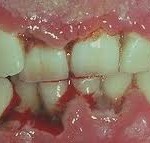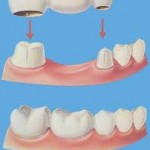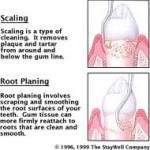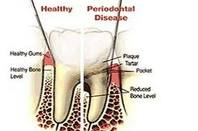What is Trench Mouth?
Trench mouth is also known as Acute Necrotizing Ulcerative Gingivitis (ANUG) or Vincent’s infection. It is an acute

ANUG
 necrotizing inflammatory disease produced by endogenous infection where systemic changes, predispose the gingiva to invasion by bacteria. A recurring periodontal disease which results in necrosis and ulceration of the gums. It is a communicable infection of the respiratory tract and mouth extending to the tongue, palate, throat and pharynx. ANUG is a mixed bacterial infection with predominant groups of anaerobic bacteria, the fusiform, spirochetes and treponema. They present in large numbers in slough and necrotic tissue at surface of the ulcer and invade a small distance into underlying connective tissue, releasing toxins and enzymes. Trench mouth is a serious oral disease which causes severe pain and major discomfort. Inability to carry out good oral hygiene and poor nutritional status are the contributing factors of trench mouth. Other causes include smoking, increased physical and emotional stress, age, poverty and infections like HIV, AIDS and measles, malignant tumors and acute leukemia.
 Continue reading →


 Having a missing tooth and worried about presence of a gap between your teeth which disrupts your daily social life and compromises your appearance. Worry less as dental bridges offer a great solution by closing the gaps. A false tooth is held in the open space at the gum line by attaching it to teeth on either side of the missing tooth. If several teeth are missing, artificial teeth are glued together and attached to adjacent real teeth. Dental implants and removable partial denture are other options available to replace missing tooth. Likewise other dental procedures, dental bridges have its advantages and disadvantages as well.
Having a missing tooth and worried about presence of a gap between your teeth which disrupts your daily social life and compromises your appearance. Worry less as dental bridges offer a great solution by closing the gaps. A false tooth is held in the open space at the gum line by attaching it to teeth on either side of the missing tooth. If several teeth are missing, artificial teeth are glued together and attached to adjacent real teeth. Dental implants and removable partial denture are other options available to replace missing tooth. Likewise other dental procedures, dental bridges have its advantages and disadvantages as well. 


